Sample Impressum Template
Impressum is a brief summary of contact information and copyrights primarily required by German-speaking countries.
Here is an overview of the laws regarding the "impressum" and how you can create an impressum for your business.
Is an impressum required?
In Germany, an "impressum" is required for any website that uses the ".de" top-level domain.
However, there's a tendency to:
- Include this information on social media account at the "About" section
- And to maintain an "impressum" if you do business in Germany -- even if you only use a ".com" top-level domain.
While the law only requires an impressum for the ".de" German-language domains, creating one for your ".com" depends on your tolerance of risk adversity.
Impressum examples
Simple impressum examples
YouTube is one of Germany's most popular websites. While it's headquartered in California and available only in a ".com" domain, the company erred on the side of caution.
In its German language version, it offers the following impressum page (English translation courtesy of Google Translate):
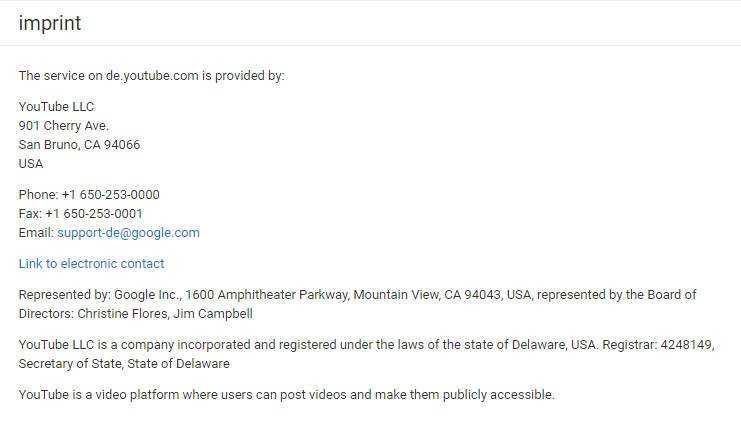
YouTube Germany's impressum is a simple impressum. It contains the minimum required information, including contact information and an email specifically for German language services.
The impressum from YouTube Germany also lists all board members too, which does not seem to be required but is a common trend.
Audi AG also takes the simple approach with its impressum page. As a European company, it also lists a VAT number:
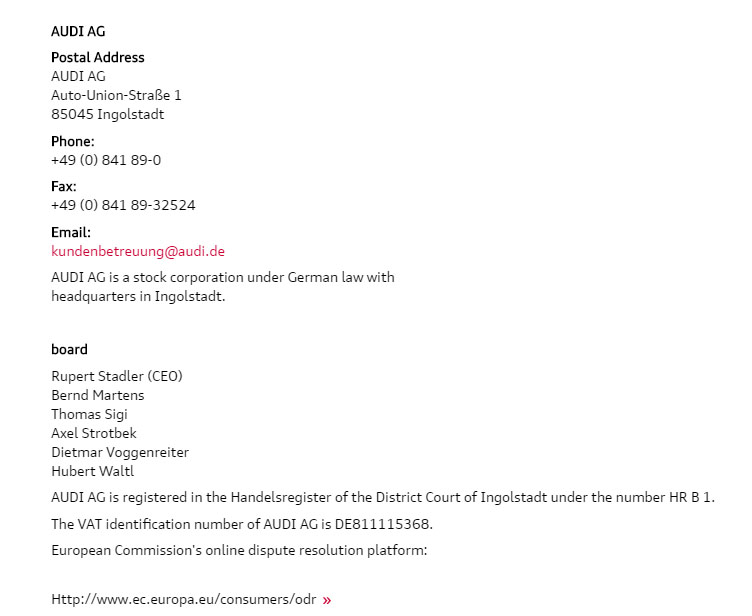
Ecommerce Impressum examples
Amazon.com is one of the largest retailers in the world. That includes its German-language website Amazon.de.
Since it uses the ".de" domain along with the ".com", it definitely falls under the Telemedia Act requirements.
The impressum of Amazon Germany begins with "Contact Information", just as with the basic examples. Since Amazon is a larger company, there's more in this section, including a description of "Amazon.de" as a trade name.
Contact information is indicated by division rather than just providing one name or email address:
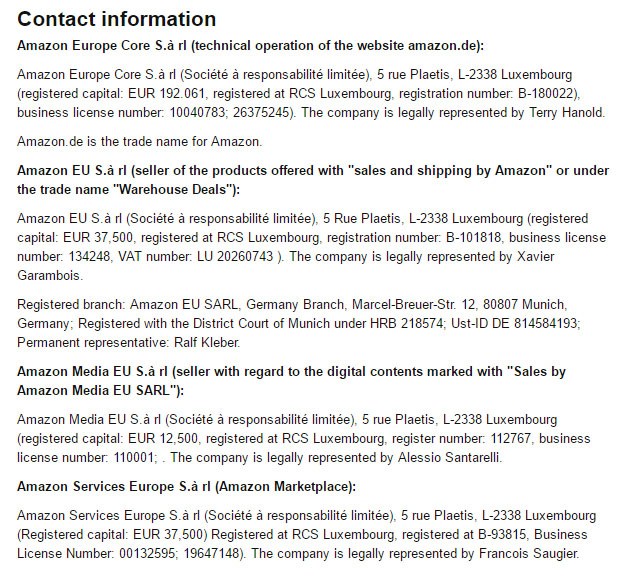
"Contact information" from this impressum indicates contact information specific to Germany:
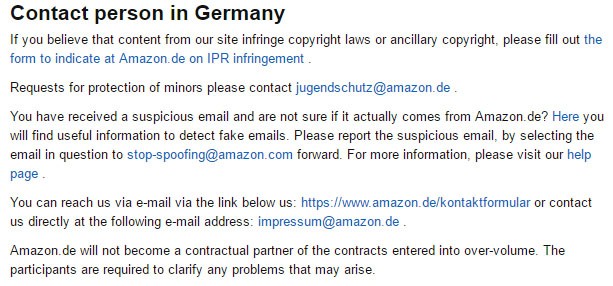
Being a large retail distributer, Amazon owns its share of intellectual property. It starts these descriptions with a section on copyright:
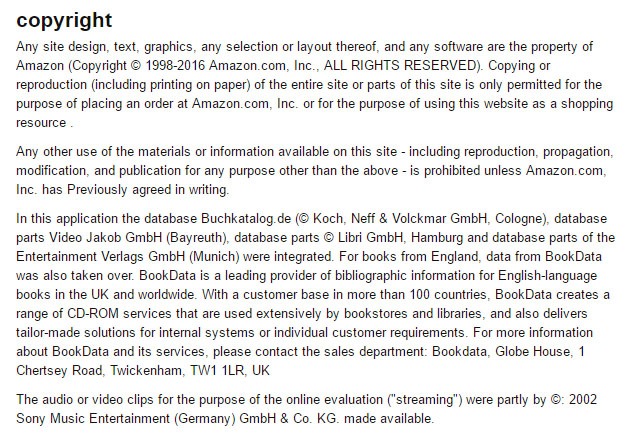
The final section on the Amazon's impressum describes trademarks and patents. While these are general descriptions, Amazon offers a link to detailed list:
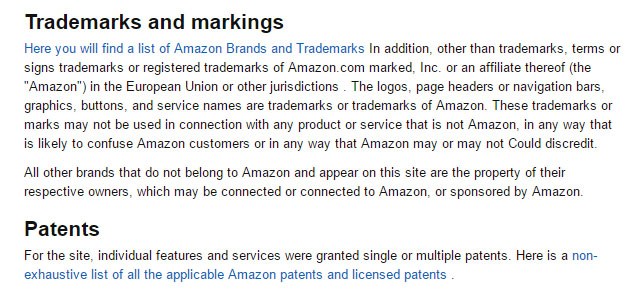
Even if your company is smaller than Amazon, you likely want to section your impressum this way if your intellectual property holdings are immense. It will make your impressum easier to read.
Publications Impressum examples
Websites presenting news and original work also present a different approach to the impressum.
Spiegel.de, the well-known German news magazine, starts by not only providing general contact information but also indicating its website addresses, including the mirrors:
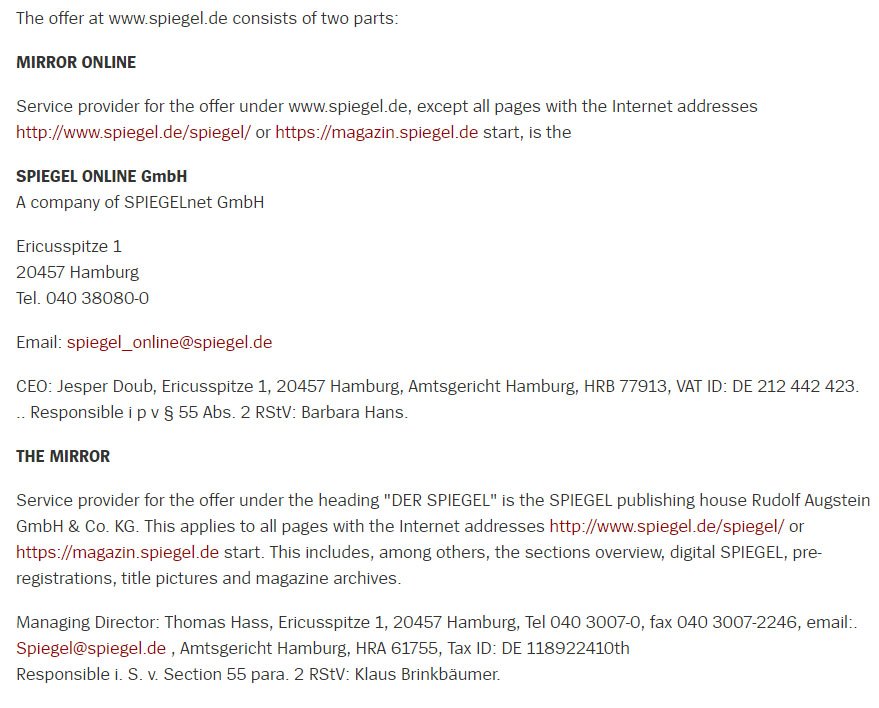
The intention of Spiegel here is to designate ownership clearly in its impressum. Since publications are vulnerable to infringement, being upfront about the web addresses and articles owned by Spiegel offers additional protection.
Spiegel also includes a staff directory from Chief Editor to its international contacts. This is similar to the masthead in newspapers which list editorial staff and the members of the board. While this example is only a portion of the listed individuals, it shows titles, names, and email hyperlinks for direct contact:
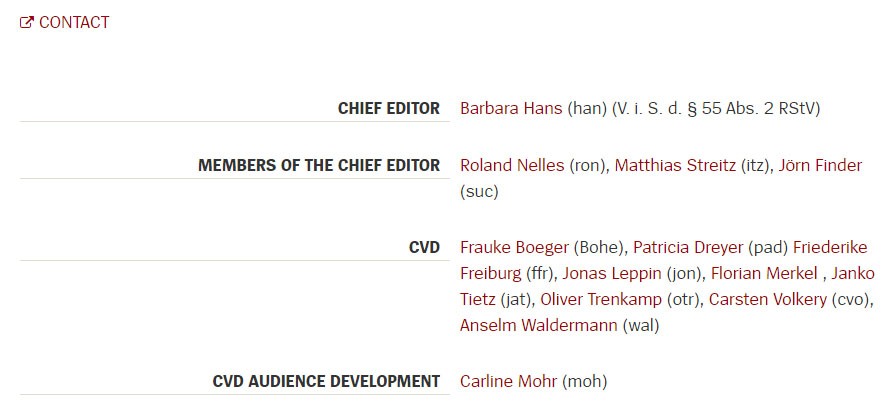
Next, Spiegel addresses licenses and copyrights. This emphasizes the rights to its published content so it is shorter than the multiple copyrights and trademarks owned by Amazon:

The end of Spiegel's impressum contains material also reminiscent of the masthead. Ownership rights to letters to the editor, privacy protection, and dispute resolution are mentioned:

Since Spiegel has a printed magazine, it's likely that it was easier to use the masthead as the Impressum too.
This would create an impressum that exceeds expectations but also offers additional notice regarding ownership rights that make it easier to enforce those rights if necessary.
Impressum for social media
There's an option in a Facebook page settings to add an impressum.
Samsung Deutschland joined this trend and added an impressum in its "About" page:
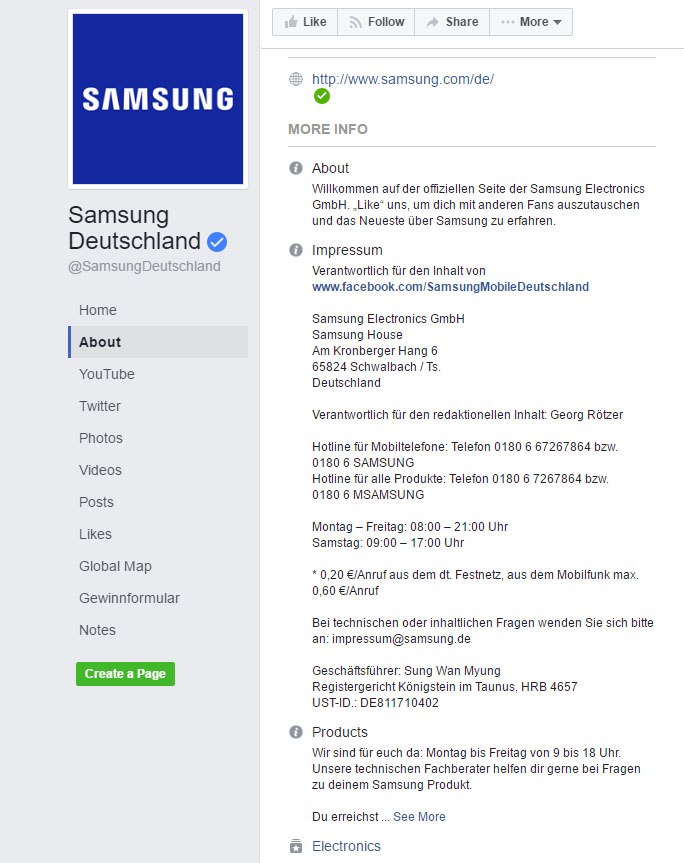
The football club, Bayern Munich, offers a English language impressum on its page. However, it seems to primarily serve as a means to present the team's multiple titles:
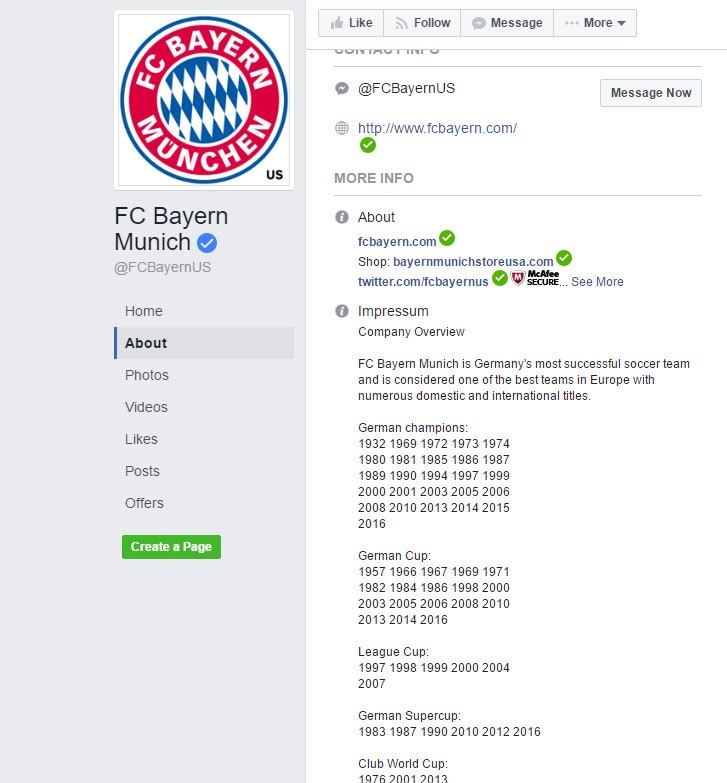
However, there is no uniform way Facebook page owners can use the Impressum section.
One of the stranger examples is the U.S. government space agency, NASA, using its impressum section to describe rules for commenting:
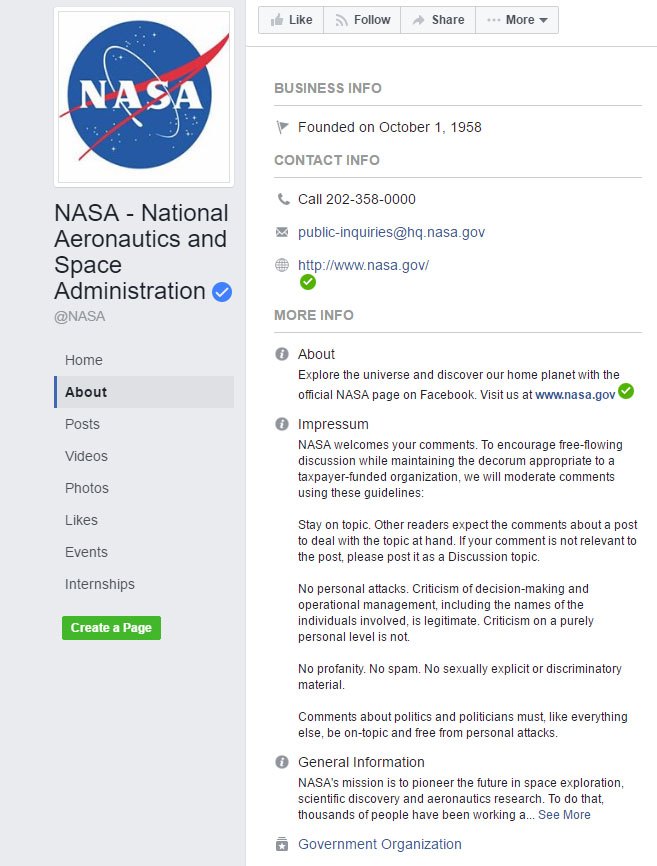
While there seems to be advocacy for placing an Impressum on social media pages, there doesn't appear to be a legal requirement for this or any consistent way to work an impressum into a social media page.
German companies appear to do a cut-and-paste from their websites to the impressum space to be thorough.
If you host a ".de" website and maintain a German-language Facebook or other social media page, it's a good practice to post your impressum. You're not technically in violation of any laws if you don't do this, but you also never know when or if social media will be part of the Telemedia Act.
It's best to do so now to avoid possible compliance issues later.
The only certainty about the Impressum is that impressum needs to be on a webpage with a ".de" domain or one that's presented in the German language.
Unless you are certain you have a strong German following (as with YouTube), it's unlikely you need one on a ".com" English language site.